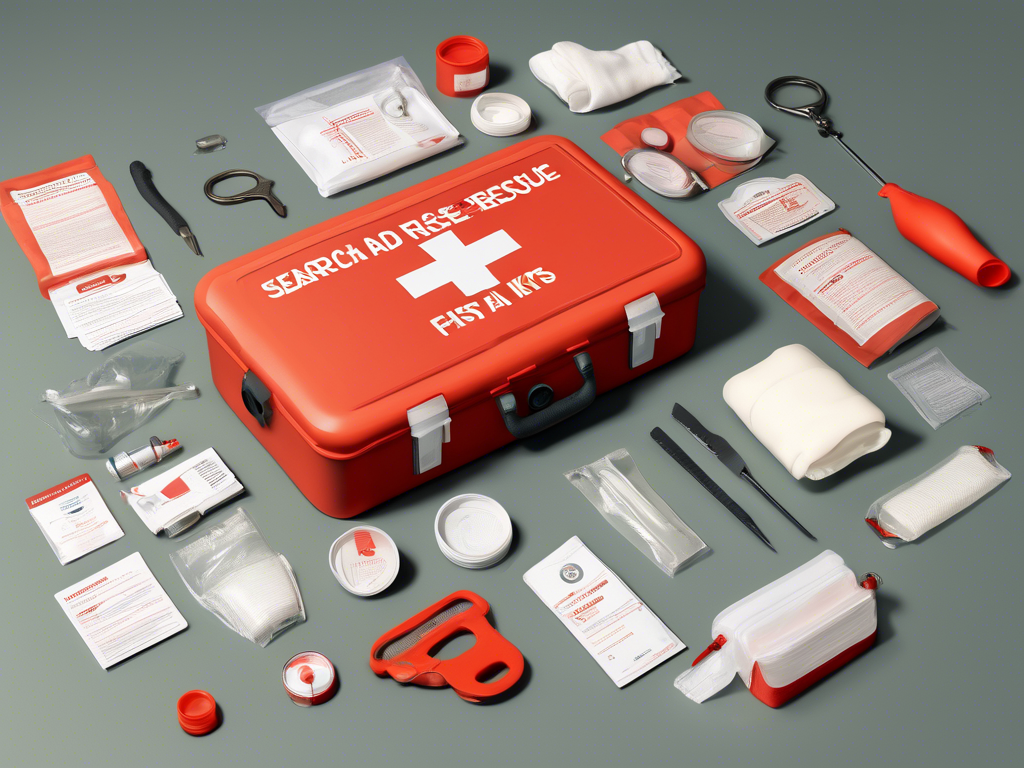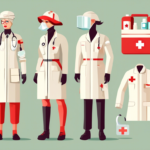When disaster strikes, every second counts, and having the right tools can mean the difference between life and death. One of the most crucial components in any emergency response scenario is a well-equipped search and rescue first aid kit. Whether you’re a seasoned outdoor adventurer, a volunteer with a search and rescue team, or simply someone who loves exploring remote areas, understanding the essentials of these kits is pivotal.
The great outdoors can be unpredictable, posing risks ranging from minor injuries to life-threatening situations. A search and rescue kit serves as your lifeline in such emergencies, providing the necessary medical supplies to stabilize an injured person until professional help arrives. However, not all kits are created equal; knowing what to include and how to maintain these kits can significantly impact your preparedness.
This article aims to provide you with a complete guide on everything you need to know about search and rescue first aid kits. From essential components and assembly instructions to expert tips on maintenance, we will cover the must-have items every kit should contain. By the end, you’ll be equipped to create or choose a kit that meets your specific needs, ensuring you’re ready for any unexpected situation that might arise.
Essential Components of a Search and Rescue First Aid Kit
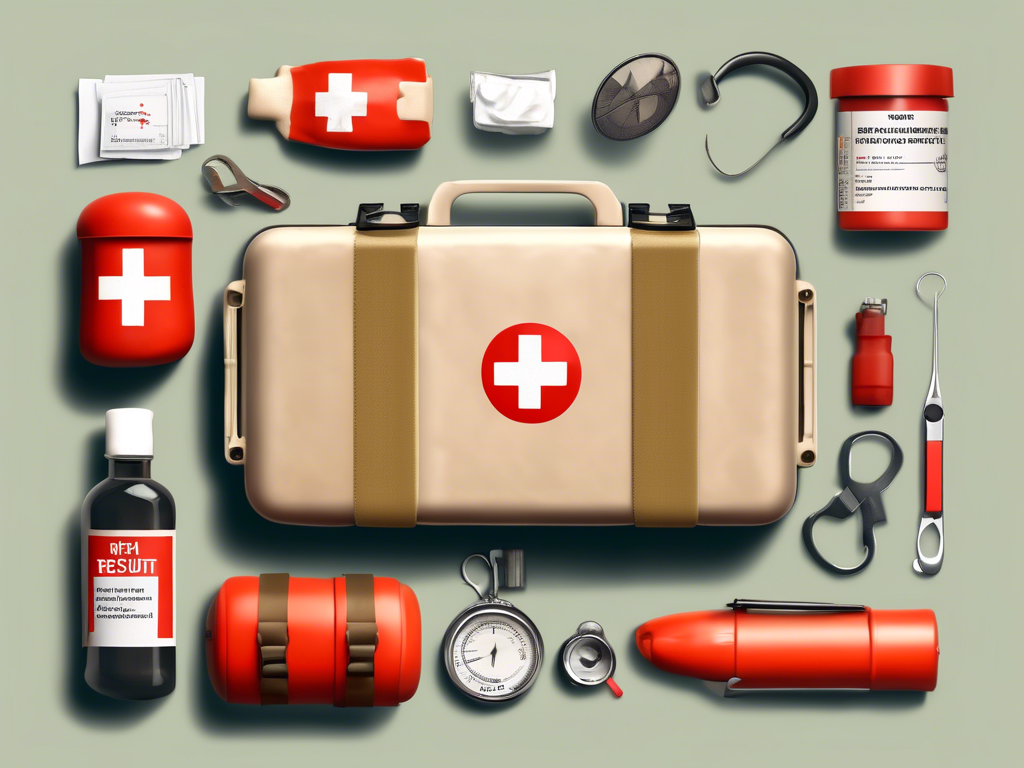
Basic Medical Supplies
A well-stocked search and rescue first aid kit should include essential medical supplies to handle a variety of emergencies. These typically consist of items such as adhesive bandages, sterile gauze pads, and adhesive tape. It’s crucial to have antiseptic wipes or alcohol swabs to cleanse wounds and prevent infections. Additionally, including safety scissors and tweezers can assist in removing splinters or cutting gauze for dressings. 🩹
Emergency Medications
Your search and rescue kit should also contain a set of emergency medications. This includes items like aspirin for heart attack symptoms, antihistamines for allergic reactions, and even a basic supply of pain relievers. Don’t forget about potential prescription medications that team members might need, such as auto-injectors for severe allergies. Always check the expiration dates on these medications regularly! 💊
Trauma Supplies
In critical situations, trauma supplies become indispensable. Include items such as triangular bandages for slings, pressure dressings for severe bleeding, and instant cold packs to manage swelling. A tourniquet is also vital for severe limb injuries. For effective management, ensure these supplies are easily accessible within your search and rescue first aid kit. 🩹🚑
Survival Tools
Incorporate survival tools as part of your search and rescue kit. Essential tools might include a whistle for signaling, a flashlight with extra batteries, and a mylar space blanket for warmth. These items not only aid in providing first aid but can also enhance overall safety during search and rescue operations. 🕯️🔦
Patient Assessment Equipment
To effectively assess injuries and respond to emergencies, it’s beneficial to equip your search and rescue first aid kit with patient assessment tools. A digital thermometer, a blood pressure cuff, and a stethoscope are valuable additions. Understanding the patient’s condition is vital for administering effective first aid and preparing for potential evacuation. 📏🩺
Documentation and Instructional Materials
Finally, including documentation and instructional materials can significantly enhance the effectiveness of your search and rescue kit. Consider adding a first aid manual that details treatment protocols and injury management strategies. Including laminated quick-reference cards for common injuries can also be extremely helpful for rapid decision-making in high-stress situations. 📖📝
How to Assemble Your Own Search and Rescue Kit for Emergencies
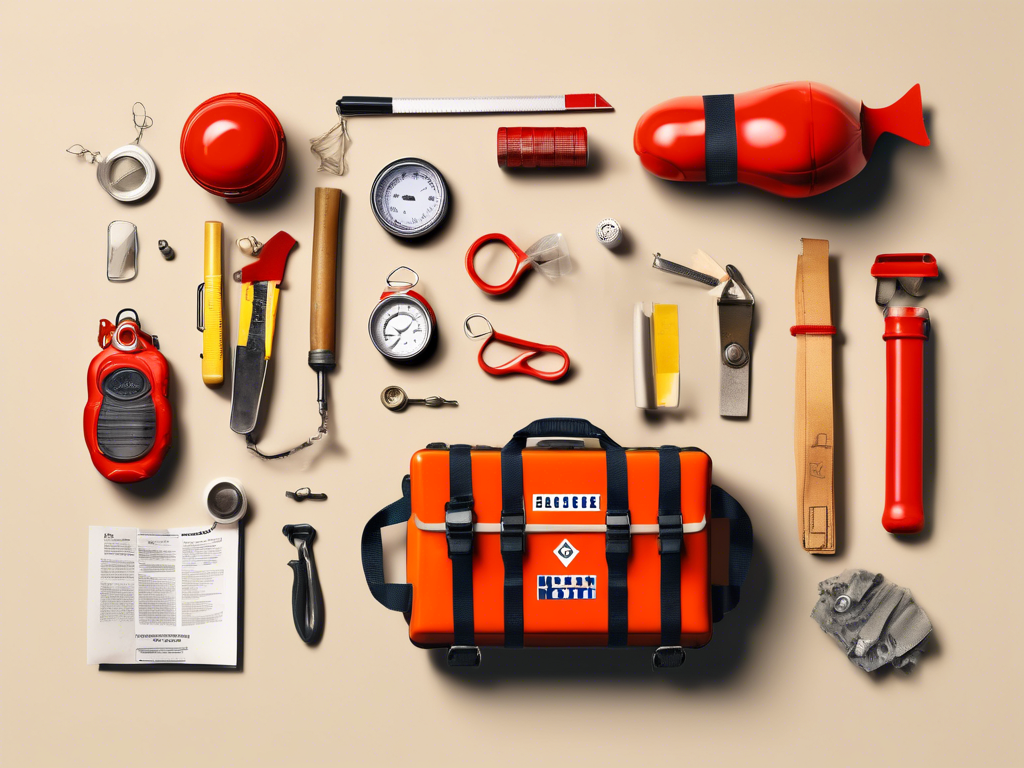
Determine Your Needs
Before assembling your own search and rescue kit, it’s essential to evaluate the specific needs of your team or situation. Consider factors like the environment you will be operating in (urban, wilderness, etc.) and the types of emergencies you might face. Are there likely to be injuries from falls, allergic reactions, or extreme weather conditions? Compiling a list that outlines your anticipated challenges will help you tailor your search and rescue first aid kit. 📋
Select Essential Medical Supplies
When choosing supplies, ensure to include a variety of basic medical items. Your kit should feature:
- Adhesive bandages and sterile gauze pads
- Antiseptic wipes or alcohol swabs
- Safety scissors and tweezers
These components are crucial for addressing common injuries and stabilizing patients before professional medical help arrives. Remember, having a well-rounded selection of supplies can make all the difference during an emergency! 🩹
Add Emergency Medications
Including a range of emergency medications in your search and rescue kit is vital. Some key medications to consider are:
- Aspirin for heart-related issues
- Antihistamines for allergic reactions
- Pain relievers like ibuprofen or acetaminophen
Be aware of any specific medical needs within your team and address them by adding necessary prescribed medications. Regularly check expiration dates to ensure all medications remain effective when needed. 💊
Incorporate Trauma Supplies and Survival Tools
Trauma supplies play a critical role in managing serious injuries. Stock your kit with items like triangular bandages, pressure dressings, and instant cold packs. Additionally, survival tools such as a whistle, flashlight, and mylar space blanket add value by providing safety and comfort in emergency situations. These tools not only assist in first aid but also enhance overall survival chances during rescues. 🚑🔦
Keep Patient Assessment Equipment Handy
To effectively assess injuries, equip your search and rescue first aid kit with essential assessment tools. Including a digital thermometer, blood pressure cuff, and stethoscope will allow you to gather important information about the patients you encounter. Understanding their condition is crucial for delivering appropriate care and making informed decisions about evacuation if necessary. 📏🩺
Compile Documentation and Instructional Materials
Finally, don’t overlook the importance of including documentation and instructional materials in your search and rescue kit. A first aid manual detailing treatment protocols can be invaluable, especially under stress. Additionally, consider laminating quick-reference cards for common injuries and procedures to facilitate swift decision-making and actions during emergencies. 📖📝
Top 10 Must-Have Items in Every Search and Rescue First Aid Kit
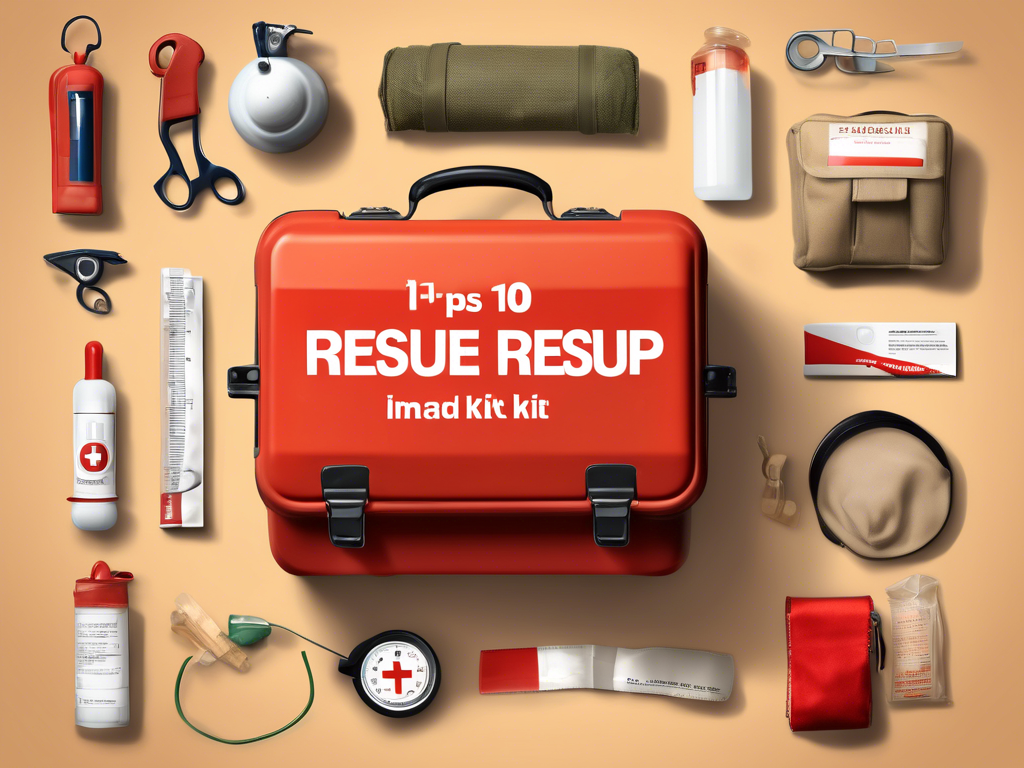
Adhesive Bandages and Gauze Pads
When assembling your search and rescue first aid kit, ensure you include a variety of adhesive bandages and sterile gauze pads. These are crucial for treating minor cuts, scrapes, and abrasions that can occur during rescue operations. Having a range of sizes will allow you to cater to different types of injuries effectively. 🩹
Pressure Dressings and Tourniquets
In situations involving severe bleeding, pressure dressings and tourniquets are lifesavers. These items control blood loss and stabilize injuries until professional medical help arrives. Make sure your search and rescue kit contains at least one of each, as their timely application can be critical during emergencies. 🚑
Instant Cold Packs
Including instant cold packs in your search and rescue first aid kit is essential for managing swelling and pain from injuries. They’re easy to activate and can provide immediate relief for sprains, strains, or any trauma experienced during the rescue operation. Just remember to check the packs regularly to ensure they remain functional! ❄️
First Aid Manual
A well-organized search and rescue first aid kit should always contain a first aid manual. This resource provides vital information on how to handle various medical emergencies and treatment protocols. It’s particularly useful for team members who may not have extensive first-aid training, serving as a quick reference guide in stressful situations. 📖
Emergency Medications
Don’t forget to stock your search and rescue kit with basic emergency medications. Items such as aspirin for heart-related issues, antihistamines for allergies, and pain relievers are invaluable. Ensure you consider potential specific needs of team members and keep medications up-to-date by checking expiration dates regularly. 💊
Thermometer and Blood Pressure Cuff
Equipping your search and rescue first aid kit with a digital thermometer and a blood pressure cuff will aid in patient assessment. Monitoring vital signs allows rescuers to gauge the severity of the situation and make informed decisions regarding further medical intervention or evacuation of injured individuals. 📏🩺
Understanding the Importance of a Well-Stocked Search and Rescue Kit

The Role of a Search and Rescue Kit in Emergencies
A well-stocked search and rescue kit is essential for managing emergencies effectively. In unpredictable situations, quick access to necessary supplies can mean the difference between life and death. The right kit provides immediate medical attention, ensuring that injuries are stabilized before professional help arrives. Having a comprehensive search and rescue first aid kit allows responders to take prompt action, significantly increasing survival chances in critical scenarios. 🚑
How Preparedness Saves Lives
Being adequately prepared with a search and rescue kit fosters a proactive approach to safety. It allows teams to confidently navigate various emergencies such as accidents, natural disasters, or medical crises. Key reasons to maintain a well-equipped search and rescue first aid kit include:
- Quick response to injuries or medical conditions
- Minimized risk of complications while awaiting professional help
- Increased safety and security for both responders and victims
By ensuring readiness, you create a secure environment where effective first aid can be administered without delay. 💪
Essential Items for Versatility
The versatility of a search and rescue kit lies in its diverse components. From basic medical supplies to advanced trauma equipment, each item plays a crucial role in addressing potential scenarios. Some essential items to include are:
- Adhesive bandages and sterile dressings
- Pressure dressings and tourniquets
- Instant cold packs and emergency medications
Having these items readily available ensures your search and rescue first aid kit can adapt to various emergencies, providing the necessary support when needed most. 🩹
Training and Familiarity with the Kit
Owning a search and rescue first aid kit is just the beginning; understanding how to use the items inside is equally important. Regular training sessions on first aid techniques and familiarization with the kit’s contents can enhance team efficiency during real-life emergencies. Consider the following practices:
- Conduct periodic drills to practice using the kit
- Review treatment protocols outlined in the first aid manual
- Stay updated on first aid best practices and advancements
By prioritizing training, responders will be better equipped to deliver effective care when every moment counts. 📚
Regular Maintenance and Updates
Keeping your search and rescue kit in peak condition requires regular maintenance and updates. Supplies can expire or become damaged over time, which may compromise their effectiveness during emergencies. Key maintenance tips include:
- Check expiration dates on all medications and replace as needed
- Inspect and restock used items after each deployment
- Ensure the kit is organized and easily accessible
Establishing a routine for maintaining your search and rescue first aid kit ensures it remains a reliable resource when facing unexpected challenges. 🔧✨
Guidelines for Choosing the Right Search and Rescue First Aid Kit

Assess Your Team’s Needs
Before selecting a search and rescue first aid kit, it’s crucial to assess the specific needs of your team. Consider factors such as the types of environments you will be working in (urban, wilderness, etc.) and the nature of the emergencies likely to occur. Will you face situations involving severe injuries, allergic reactions, or environmental hazards? By understanding these risks, you can tailor your search and rescue kit to ensure it contains all necessary supplies. 🏞️
Check for Compliance with Standards
When purchasing a search and rescue first aid kit, ensure it meets established industry standards. Many regions have guidelines that dictate the contents of emergency kits. Look for kits that comply with ANSI (American National Standards Institute) or OSHA (Occupational Safety and Health Administration) regulations. A compliant kit not only ensures that you are prepared for various medical scenarios but also provides peace of mind that your supplies are appropriate for emergency situations. 📜✅
Prioritize Quality Over Quantity
While it may be tempting to choose a search and rescue kit based solely on the number of items included, prioritize quality over quantity. High-quality medical supplies are more reliable during emergencies, which can greatly impact outcomes. Look for reputable brands known for their durability and efficiency. Also, ensure that any medications included are from trusted sources to minimize the risk of using ineffective or unsafe products. 💯
Incorporate Personalization For Specific Scenarios
Consider incorporating personalized items into your search and rescue first aid kit. This might include specific medications, bandages, or tools that cater to the unique needs of your team members. For instance, if some team members have known allergies, include antihistamines or auto-injectors for them. The goal is to ensure every possible scenario is covered. Personalization increases the kit’s effectiveness when dealing with real-life emergencies. 🌟
Ensure Easy Accessibility
Lastly, ensure that your search and rescue first aid kit is easily accessible. In emergencies, time is of the essence, so having a well-organized kit can make a significant difference. Opt for kits with clear labeling and compartments that allow quick retrieval of supplies. Additionally, consider the size and weight of the kit; it should be manageable for transport while still holding all essential items. 🚀
Regularly Review and Update Your Kit
Finally, don’t overlook the importance of regularly reviewing and updating your search and rescue kit. Items can expire or become damaged over time, potentially compromising their functionality during an emergency. Set a schedule—perhaps quarterly or bi-annually—to check expiration dates, refill used supplies, and ensure everything is in optimal condition. Keeping your kit updated is vital for effective response during crises. 🛠️✨
Preparing for the Unexpected: Planning Your Search and Rescue Kit
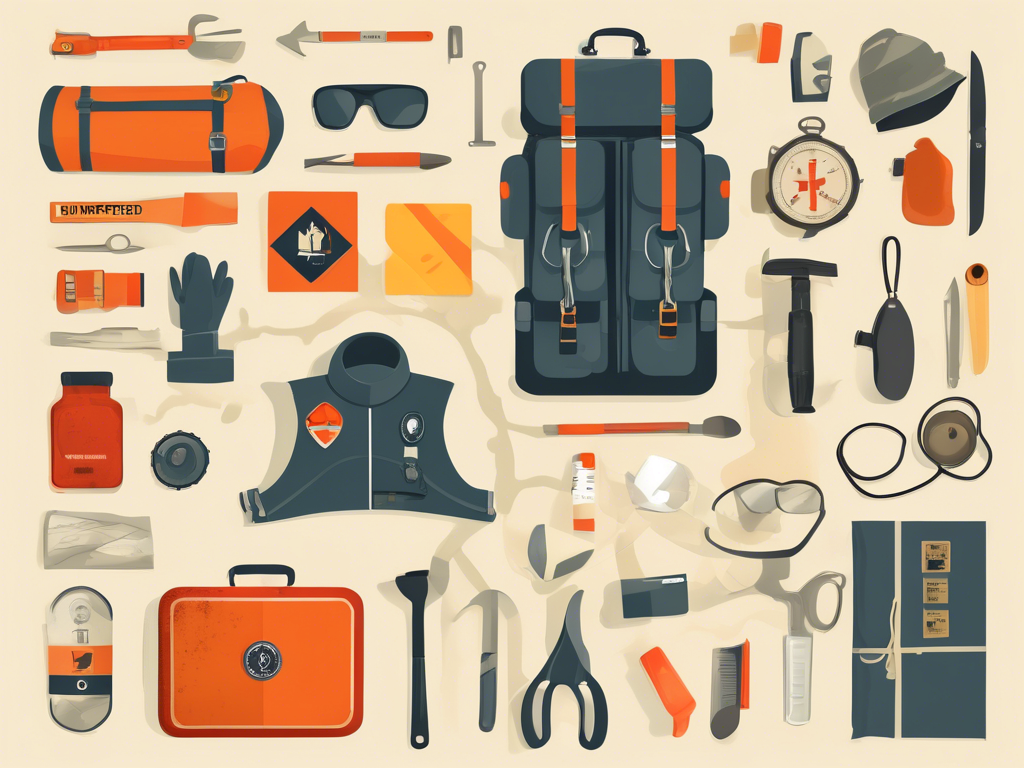
Identifying Potential Emergencies
When planning your search and rescue kit, it’s vital to consider the types of emergencies you might encounter. Factors such as location, weather conditions, and activity type play a crucial role in determining your needs. Common scenarios may include:
- Injuries from falls or accidents
- Allergic reactions to plants or insect bites
- Exposure to extreme temperatures
By understanding these potential challenges, you can accurately tailor your search and rescue first aid kit to effectively address the specific threats you may face. 🏞️
Customizing Your Kit for Specific Activities
Different activities require unique supplies in your search and rescue kit. For instance, if you’re engaged in outdoor adventures like hiking or camping, you might need items like blister pads or snake bite kits. On the other hand, urban rescues may necessitate equipment for managing urban-specific injuries. Always think about what will be most useful based on your intended activities to ensure your search and rescue first aid kit is fully equipped. 🌲🏙️
Essential Tools for Every Scenario
Regardless of specific activities, there are foundational tools that should be included in every search and rescue kit. These essentials may encompass:
- A reliable flashlight with spare batteries
- A whistle for signaling help
- Multi-tool or Swiss Army knife
- Mylar space blanket for warmth
These versatile items allow for both medical assistance and basic survival capabilities, making your search and rescue first aid kit effective across various situations. 🔦🛠️
Staying Informed and Trained
Equipping your search and rescue kit is only half the battle—knowing how to use it effectively is essential. Regular training sessions for all team members can enhance their skills in using the kit’s supplies and performing first aid. Consider organizing workshops or drills focusing on emergency response scenarios to keep skills sharp and ensure everyone knows how to act swiftly and decisively when needed. 📚🩺
Regular Maintenance and Reassessment
Finally, ensure that your search and rescue first aid kit remains in peak condition through regular maintenance. Assess your supplies frequently, looking for expired medications or damaged equipment. Establish a routine for checking and restocking your kit every few months, adapting it to any new potential risks or changes in team members’ needs. This diligence allows your kit to be a reliable resource during unanticipated emergencies. 🔧✨
Expert Tips on Maintaining Your Search and Rescue First Aid Kit
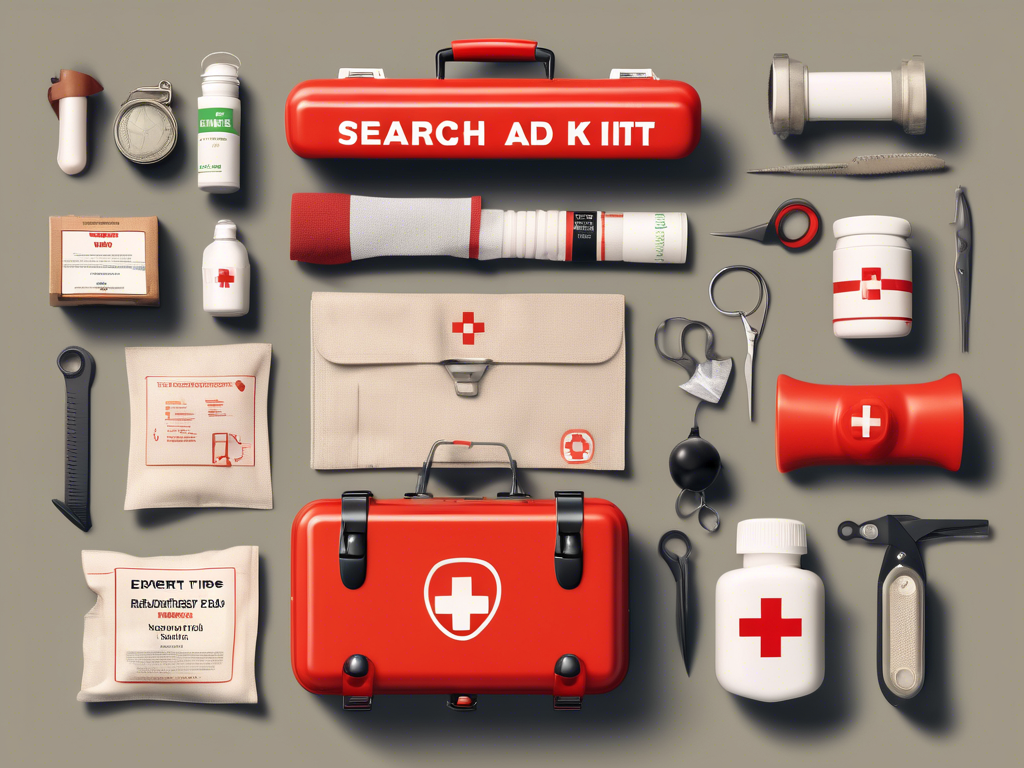
Regular Inventory Checks
Maintaining your search and rescue first aid kit begins with regular inventory checks. Establish a schedule—preferably monthly or quarterly—to review the contents of your kit. During these checks, look for expired items, damages, or supplies that have been used. Create a checklist to ensure all essential components are accounted for and in good condition. This practice helps you avoid any surprises when emergencies arise! 📅
Restock After Use
After every use of your search and rescue first aid kit, it’s crucial to restock any items that were utilized. Whether it’s adhesive bandages, antiseptic wipes, or emergency medications, keeping track of what has been used ensures that your kit remains fully stocked and ready for the next situation. Consider designating a specific person to be responsible for this task to maintain accountability. 🛒✅
Educate Your Team
It’s not enough just to have a well-stocked search and rescue kit; every team member should know how to use its contents effectively. Conduct training sessions that cover the basics of first aid as well as specific techniques related to the items included in the kit. This education will empower your team to act quickly and correctly during emergencies, making the kit even more effective. 📚🩺
Store Properly
Proper storage of your search and rescue first aid kit is key to ensuring its longevity and functionality. Keep your kit in a cool, dry place to prevent moisture damage or degradation of supplies. Consider using waterproof containers for additional protection, especially if your search and rescue operations may take you into harsh environments. 💧🔒
Update for Specific Scenarios
As your team evolves or your activities change, so too should your search and rescue kit. Regularly reassess the specific scenarios you might face and customize your kit accordingly. For instance, if you plan to undertake activities in colder climates, add items like thermal blankets or frostbite kits. Keeping your kit tailored to current needs enhances its effectiveness. 🌨️🔧
Document Everything
Make sure to document all inventory checks, restocks, and updates to your search and rescue first aid kit. Keeping a log allows for easy tracking of supplies and can help identify patterns in usage over time. This documentation serves as a valuable reference for future assessments, ensuring you always have the necessary equipment on hand. 📖✍️
Common Mistakes to Avoid When Packing a Search and Rescue Kit
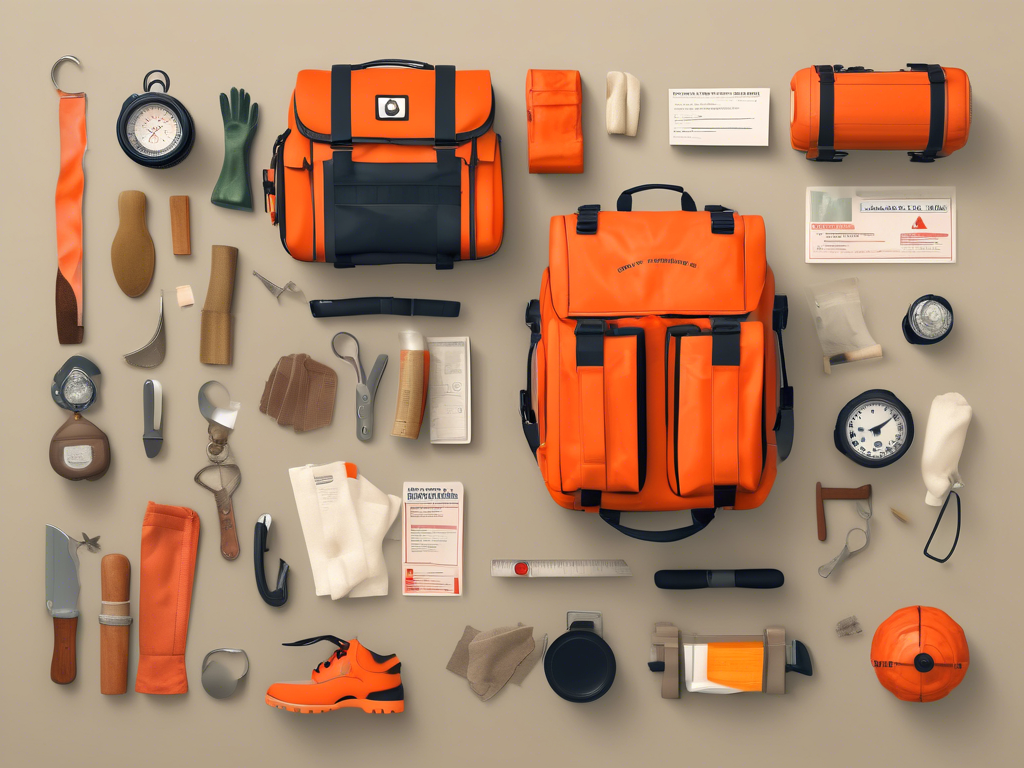
Ignoring Individual Team Needs
One of the most common mistakes made when assembling a search and rescue kit is not considering the specific needs of each team member. Every individual may have different medical requirements, such as particular medications for allergies or chronic conditions. Failing to personalize your search and rescue first aid kit can jeopardize the health of your team in emergency situations. Always assess potential needs and include personalized items to cater to these variances. 🩺
Overpacking with Unnecessary Items
While it might seem beneficial to include as many items as possible in a search and rescue kit, overpacking can lead to confusion and slow responses during emergencies. It’s important to focus on the essentials rather than cramming in unnecessary gear. Instead of adding every conceivable item, prioritize the most effective tools and supplies that will genuinely address expected scenarios. A well-organized kit with only necessary items ensures quick access in critical situations. 📦❌
Neglecting Regular Maintenance
Another common mistake is neglecting the maintenance and regular updates of the search and rescue first aid kit. Supplies can expire, and equipment can become damaged over time. Without routine checks, you risk relying on ineffective or unusable items during an emergency. Establish a schedule to review contents, rotate stock, and check for expiration dates to ensure your kit remains ready for action when you need it most! 🔧🛠️
Failing to Train Team Members
Having a stocked search and rescue kit is only half the battle; proper training is equally vital. Many responders make the mistake of assuming team members know how to use every item in the kit. Conduct regular training sessions to familiarize all members with the specific tools and techniques they may need to apply. Proper education increases efficiency and confidence, allowing your team to provide effective assistance during emergencies. 📚👨⚕️
Not Storing the Kit Correctly
Improper storage can significantly impact the functionality of a search and rescue first aid kit. Failing to store the kit in a cool, dry place can lead to moisture damage or degradation of supplies. Ensure the kit is kept in a location that is both easily accessible and protected from environmental factors. Invest in waterproof containers if necessary, especially if operating in rugged terrains or unpredictable weather conditions. 🌧️📦
Disregarding Documentation
Lastly, many overlook the importance of documenting inventory and updates for their search and rescue kit. Keeping records of what’s included, when items are used, and when restocks are needed facilitates better management. Documenting these details helps track usage patterns and ensures your kit is always equipped with necessary items. Implement a simple logging system to maintain clarity and accountability! 📖✍️
Real-Life Applications of Search and Rescue First Aid Kits in the Field
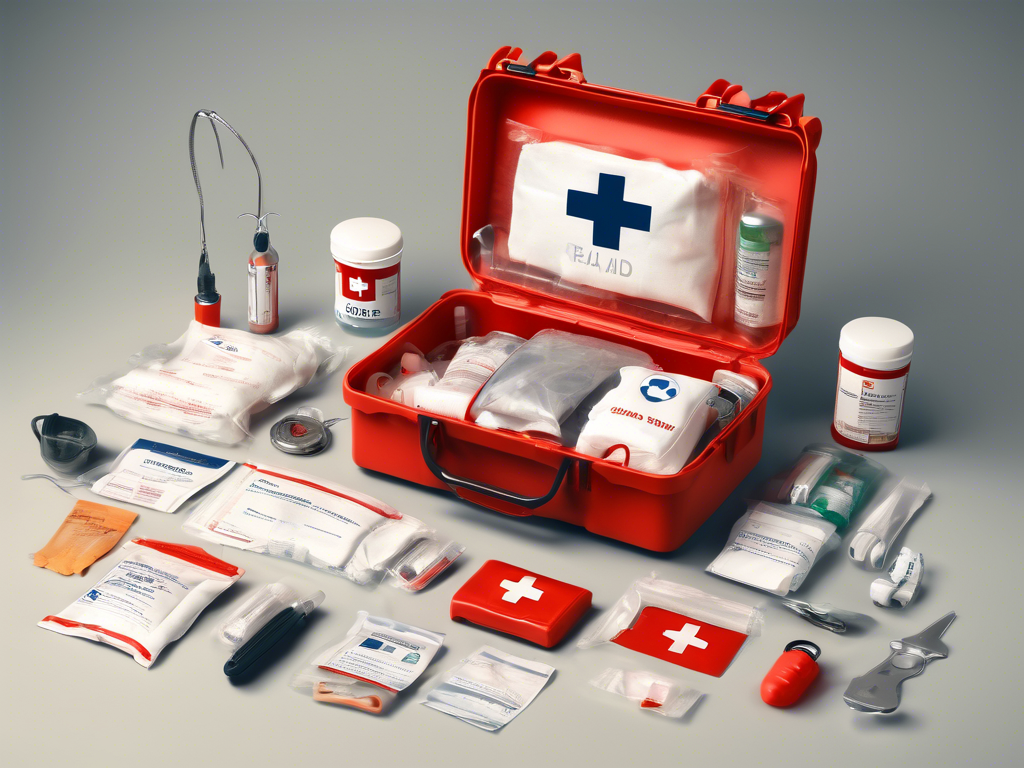
Field Operations During Natural Disasters
In the midst of natural disasters such as hurricanes, earthquakes, or floods, a well-equipped search and rescue kit is crucial. Teams often operate under extremely challenging conditions where injuries can occur due to debris, environmental hazards, or stress-related ailments. The search and rescue first aid kit empowers responders to quickly address injuries like cuts, fractures, and shock, providing immediate care and stabilizing patients until they can be evacuated. 🌪️🚑
Wilderness Searches for Missing Persons
Wilderness search and rescue missions involve navigating rugged terrains where injuries are more likely to happen. A comprehensive search and rescue kit includes specialized items like emergency survival gear and advanced trauma supplies. These resources allow volunteers and professionals to perform first aid on the spot, treat hypothermia, or manage wildlife-related injuries effectively. Being prepared in these scenarios can significantly increase the chances of survival for those in distress. 🏞️🌲
Urban Search and Rescue Situations
During urban rescues, especially in areas affected by building collapses or terrorist attacks, the need for a search and rescue first aid kit becomes critical. Responders face various medical emergencies, including severe bleeding, fractures, and mental health crises. Equipped with vital supplies such as tourniquets, pressure dressings, and communication tools, the search and rescue kit ensures responders can provide immediate care and support while awaiting further medical assistance. 🏙️🚨
Emergency Response Training Exercises
Regular training exercises conducted by rescue organizations also showcase the importance of a well-stocked search and rescue kit. During these drills, team members practice real-life scenarios that require them to utilize the kit’s contents efficiently. From bandaging simulated wounds to administering CPR, these exercises highlight how essential a search and rescue first aid kit is in honing skills and ensuring readiness for actual emergencies.📚👩⚕️
Community Preparedness Initiatives
Community organizations often conduct preparedness initiatives, equipping local volunteers with search and rescue kits. For events like community festivals or public gatherings, having a readily available search and rescue first aid kit helps manage minor injuries like scrapes, allergies, or heat exhaustion. This proactive approach enables communities to create a safer environment, ensuring immediate response capabilities during any unexpected incidents. 🌟👥
Support During Outdoor Events and Expeditions
Outdoor events, such as marathons, triathlons, and camping trips, require teams to be equipped with a search and rescue first aid kit. Participants may suffer from dehydration, sprains, or heatstroke, necessitating quick access to medical supplies. By having a well-prepared search and rescue kit nearby, event organizers can ensure participant safety and swift medical intervention, significantly reducing the risk of severe health issues. 🏃♀️⛺️
Summing up
In conclusion, the importance of a well-stocked search and rescue first aid kit cannot be overstated. From the essential components that form the backbone of your kit to practical guidelines on assembly and maintenance, being prepared can save lives. Each item you include serves a purpose, helping to manage emergencies effectively and offering peace of mind when venturing into the unknown.
We’ve explored the top ten must-have items for any search and rescue kit, emphasizing the significance of planning and avoiding common mistakes. The insights gathered here not only apply to individual outdoor enthusiasts but also extend to organized rescue operations, highlighting the necessity of equipping oneself adequately. Remember, when it comes to safety, preparation is key.
As you embark on your adventures, take the time to assess your own readiness. Why not start putting together your personalized search and rescue first aid kit today? Stay vigilant, stay prepared, and never underestimate the power of being equipped for emergencies. Your proactive measures could very well make a life-saving difference when it matters most.
